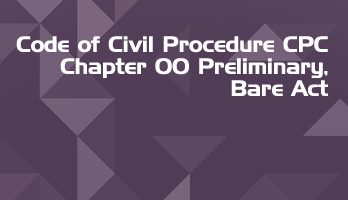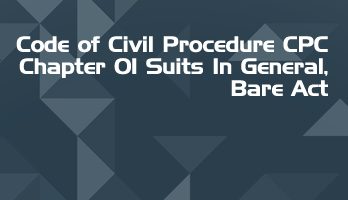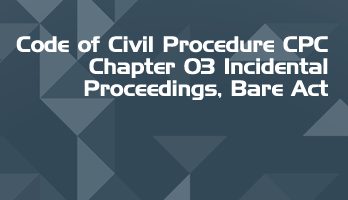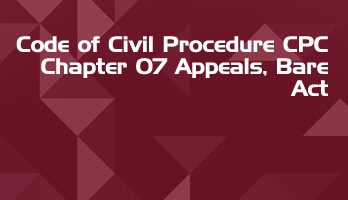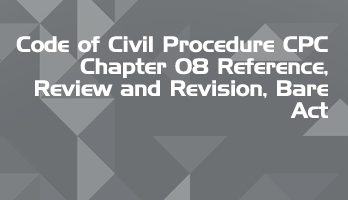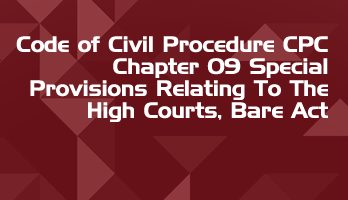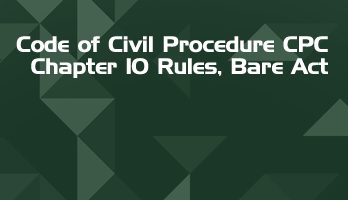Most acts are accompanied by 'subsidiary legislation' such as rules, regulations, notifications and orders; which address the actual implementation detail of the act.
Free Full Course Available on LawMint's YouTube Channel
How to Land Your Dream LLB Internship in a Top Law Firm
- Part 1 - Introduction
- Part 2 - Internship Planning
- Part 3 - Internship Research
- Part 4 - Building Your Profile
- Part 5 - The Email
- Part 6 - The Resume
- Part 7 - The Cover Letter
- Part 8 - The Interview
- Part 9 - Self Development
Practical and comprehensive course, with real examples and step-by-step analysis of the complete internship application process. Check out LawMint's YouTube channel now!
Negotiable Instruments Act, 1881
Chapter II – Of Notes, Bills and Cheques
Section 4 – “Promissory note”
A “promissory note” is an instrument in writing (not being a bank – note or a currency – note) containing an unconditional undertaking, signed by the maker, to pay a certain sum of money only to, or to the order of, a certain person, or to the bearer of the instrument.
Illustrations
A signs instruments in the following terms:
- I promise to pay B or order Rs. 500.
- I acknowledge myself to be indebted to B in Rs. 1,000 to be paid on demand, for value received.
- Mr. B, I O U Rs. 1,000.
- I promise to pay B Rs. 500 and all other sums which shall be due to him.
- I promise to pay B Rs. 500, first deducting thereout any money which he may owe me.
- I promise to pay B Rs. 500 seven days after my marriage with C.
- I promise to pay B Rs. 500 on D’s death, provided D leaves me enough to pay that sum.
- I promise to pay B Rs. 500 and to deliver to him my black horse on 1st January next. The instruments respectively marked (a) and (b) are promissory notes. The instruments respectively marked (c), (d), (e), (f), (g) and (h) are not promissory notes.
Section 5 – “Bill of exchange”
A “bill of exchange” is an instrument in writing, containing an unconditional order, signed by the maker, directing a certain person to pay a certain sum of money only to, or to the order of, a certain person or to the bearer of the instrument. A promise or order to pay is not “conditional”, within the meaning of this section and section 4, by reason of the time for payment of the amount or any instalment thereof being expressed to be on, the lapse of a certain period after the occurrence of a specified event which, according to the ordinary expectation of mankind, is certain to happen, although the time of its happening may be uncertain. The sum payable may be “certain”, within the meaning of this section and section 4, although it includes future interest or is payable at an indicated rate of exchange, or is according to the course of exchange, and although the instrument provides that, on default of payment of an instalment, the balance unpaid shall become due. The person to whom it is clear that the direction is given or that payment is to be made may be a “certain I person”, within the meaning of this section and section 4, although he is mis – named or designated by description only.
Section 6 – “Cheque”
A “cheque” is a bill of exchange drawn on a specified banker and not expressed to be payable otherwise than on demand and it includes the electronic image of a truncated cheque and a cheque in the electronic form.
Explanations
- For the purposes of this section, the expressions –
- “a cheque in the electronic form” means a cheque drawn in electronic form by using any computer resource and signed in a secure system with digital signature (with or without biometrics signature) and asymmetric crypto system or with electronic signature, as the case may be;
- “a truncated cheque” means a cheque which is truncated during the course of a clearing cycle, either by the clearing house or by the bank whether paying or receiving payment, immediately on generation of an electronic image for transmission, substituting the further physical movement of the cheque in writing.
- For the purposes of this section, the expression “clearing house” means the clearing house managed by the Reserve Bank of India or a clearing house recognised as such by the Reserve Bank of India.
- For the purposes of this section, the expressions “asymmetric crypto system”, “computer resource”, “digital signature”, “electronic form” and “electronic signature” shall have the same meanings respectively assigned to them in the Information Technology Act, 2000.
Section 7 – Drawer, Drawee
The maker of a bill of exchange or cheque is called the “drawer”; the person thereby directed to pay is called the “drawee”. Drawee in case of need. When in the bill or in any endorsement thereon the name of any person is given in addition to the drawee to be resorted to in case of need, such person is called a “drawee in case of need “. Acceptor. After the drawee of a bill has signed his assent upon the bill, or, if there are more parts thereof than one, upon one of such parts, and delivered the same, or given notice of such signing to the holder or to some person on his behalf, he is called the “acceptor”. Acceptor for honour. When a bill of exchange has been noted or protested for non – acceptance or for better security, and any person accepts it supra – protest for honour of the drawer or of any one of the endorsers, such person is called an “acceptor for honour”. Payee. The person named in the instrument, to whom or to whose order the money is by the instrument directed to be paid, is called the “payee”.
Section 8 – “Holder”
The “holder” of a promissory note, bill of exchange or cheque means any person entitled in his own name to the possession thereof and to receive or recover the amount due thereon from the parties thereto. Where the note, bill or cheque is lost or destroyed, its holder is the person so entitled at the time of such loss or destruction.
Section 9 – “Holder in due course”
Holder in due course, means any person who for consideration became the possessor of a promissory note, bill of exchange or cheque if payable to bearer, or the payee or indorsee thereof, if payable to order, before the amount mentioned in it became payable, and without having sufficient cause to believe that any defect existed in the title of the person from whom he derived his title.
Section 10 – “Payment in due course”
Payment in due course, means payment in accordance with the apparent tenor of the instrument in good faith and without negligence to any person in possession thereof under circumstances which do not afford a reasonable ground for believing that he is not entitled to receive payment of the amount therein mentioned.
Section 11 – Inland instrument
A promissory note, bill of exchange or cheque drawn or made in India, and made payable in, or drawn upon any person resident in, India shall be deemed to be an inland instrument.
Section 12 – Foreign instrument
Any such instrument not so drawn, made or made payable shall be deemed to be a foreign instrument.
Section 13 – Negotiable instrument
(1) A “negotiable instrument” means a promissory note, bill of exchange or cheque payable either to order or to bearer.
Explanations
- A promissory note, bill of exchange or cheque is payable to order which is expressed to be so payable or which is expressed to be payable to a particular person, and does not contain words prohibiting transfer or indicating an intention that it shall not be transferable.
- A promissory note, bill of exchange or cheque is payable to bearer which is expressed to be so payable or on which the only or last endorsement is an endorsement in blank.
- Where a promissory note, bill of exchange or cheque, either originally or by endorsement, is expressed to be payable to the order of a specified person, and not to him or his order, it is nevertheless payable to him or his order at his option.
(2) A negotiable instrument may be made payable to two or more payees jointly, or it may be made payable in the alternative to one of two, or one or some of several payees.
Section 14 – Negotiation
When a promissory note, bill of exchange or cheque is transferred to any person, so as to constitute that person the holder thereof, the instrument is said to be negotiated.
Section 15 – Indorsement
When the maker or holder of a negotiable instrument signs the same, otherwise than as such maker, for the purpose of negotiation, on the back or face thereof or on a slip of paper annexed thereto, or so signs for the same purpose a stamped paper intended to be completed as a negotiable instrument, he is said to indorse the same, and is called the “indorser”.
Section 16 – Indorsement in “blank” and “in full”.
- If the indorser signs his name only, the indorsement is said to be “in blank”, and if he adds a direction to pay the amount mentioned in the instrument to, or to the order of, a specified person, the indorsement is said to be “in full”; and the person so specified is called the “indorsee” of the instrument.
- Indorsee. The provisions of this Act relating to a payee shall apply with the necessary modifications to an indorsee.
Section 17 – Ambiguous instruments
Where an instrument may be construed either as a promissory note or bill of exchange, the holder may at his election treat it as either, and the instrument shall be thenceforward treated accordingly.
Section 18 – Where amount is stated differently in figures and words
If the amount undertaken or ordered to be paid is stated differently in figures and in words, the amount stated in words shall be the amount undertaken or ordered to be paid.
Section 19 – Instruments payable on demand
A promissory note or bill of exchange, in which no time for payment is specified, and a cheque, are payable on demand.
Section 20 – Inchoate stamped instruments
Where one person signs and delivers to another a paper stamped in accordance with the law relating to negotiable instruments then in force in India, and either wholly blank or having written thereon an incomplete negotiable instrument, he thereby gives prima facie authority to the holder thereof to make or complete, as the case may be, upon it a negotiable instrument, for any amount specified therein and not exceeding the amount covered by the stamp. The person so signing shall be liable upon such instrument, in the capacity in which he signed the same, to any holder in due course for such amount: Provided that no person other than a holder in due course shall recover from the person delivering the instrument any thing in excess of the amount intended by him to be paid thereunder.
Section 21 – “At sight”
“On presentment”. In a promissory note or bill of exchange the expressions “at sight” and “on presentment” mean on demand. The expression “after sight” means, in a promissory note, after presentment for sight, and, in a bill of exchange, after acceptance, or noting for non – acceptance, or protest for non – acceptance.
Section 22 – “Maturity”
The maturity of a promissory note or bill of exchange is the date at which it falls due. Days of grace. Every promissory note or bill of exchange which is not expressed to be payable on demand, at sight or on presentment is at maturity on the third day after the day on which it is expressed to be payable.
Section 23 – Calculating maturity of bill or note payable so many months after date or sight
In calculating the date at which a promissory note or bill of exchange, made payable a stated number of months after date or after sight, or after a certain event, is at maturity, the period stated shall be held to terminate on the day of the month which corresponds with the day on which the instrument is dated, or presented for acceptance or sight, or noted for non – acceptance, or protested for non – acceptance, or the event happens, or, where the instrument is a bill of exchange made payable a stated number of months after sight and has been accepted for honour, with the day on which it was so accepted. If the month in which the period would terminate has no corresponding day, the period shall be held to terminate on the last day of such month.
Illustrations
- A negotiable instrument, dated 29th January 1878, is made payable at one month after date. The instrument is at maturity on the third day after the 28th February 1878.
- A negotiable instrument, dated 30th August 1878, is made payable three months after date. The instrument is at maturity on the 3rd December 1878.
- A promissory note or bill of exchange, dated 31st August 1878, is made payable three months after date. The instrument is at maturity on the 3rd December 1878.
Section 24 – Calculating maturity of bill or note payable so many days after date or sight
In calculating the date at which a promissory note or bill of exchange made payable a certain number of days after date or after sight or after a certain event is at maturity, the day of the date, or of presentment for acceptance or sight, or of protest for non – acceptance, or on which the event happens, shall be excluded.
Section 25 – When day of maturity is a holiday
When the day on which a promissory note or bill of exchange is at maturity is a public holiday, the instrument shall be deemed to be due on the next preceding business day.
Explanations
The expression “public holiday” includes Sundays and any other day declared by the Central Government, by notification in the Official Gazette, to be a public holiday.
Important Central Acts in Regional Languages
Legislative department website also features regional language versions of several important Central Acts.
Free Full Course Available on LawMint's YouTube Channel
How to Land Your Dream LLB Internship in a Top Law Firm
- Part 1 - Introduction
- Part 2 - Internship Planning
- Part 3 - Internship Research
- Part 4 - Building Your Profile
- Part 5 - The Email
- Part 6 - The Resume
- Part 7 - The Cover Letter
- Part 8 - The Interview
- Part 9 - Self Development
Practical and comprehensive course, with real examples and step-by-step analysis of the complete internship application process. Check out LawMint's YouTube channel now!



